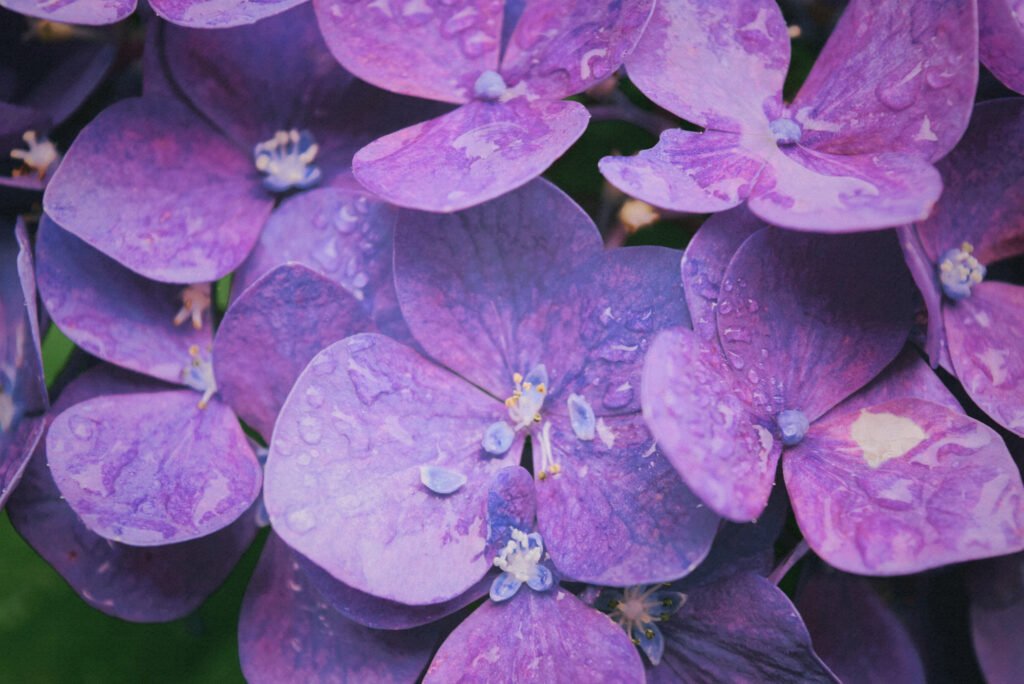Violets are delicate, charming flowers that bloom in early spring. Their petals are often bi-colored, with purple and white hues blending together in a beautiful display. With their sweet fragrance and dainty appearance, violets bring joy to any garden or indoor space where they grow.
Different types of Violets
- African Violets (Saintpaulia spp.)
- Sweet Violets (Viola odorata)
- Pansy Violets (Viola x wittrockiana)
Life Cycle:
Annual (some species)
Perennial (most species)
Bloom Season:
Spring to fall, depending on the species
Characteristics:
- Attracts bees and butterflies
- Easy to grow and maintain
- Edible (leaves and flowers are edible)
- Fragrant (leaves and flowers have a sweet scent)
- Extended bloom time (some species can bloom for months)
- Ornamental (used in landscaping and as cut flowers)
Growing Conditions:
- Well-draining soil
- Full sun to partial shade
- Moderate watering (do not overwater)
Resistance:
- Deer (some species are resistant to deer)
- Rabbit (some species are resistant to rabbit)
- Rust (some species have resistance to rust)
Note:
Some species of violets are more resistant to pests and diseases than others, but it’s important to note that no plant is completely immune to these issues.
| Season | Depth | Height | Spacing | US Hardiness zone |
|---|---|---|---|---|
| Continuous | 4-5 inches | 12-18 inches | 3-4 inches | 3-10 |
Light Requirements:
- Violets prefer partial shade, especially in warmer climates. They require 2-4 hours of direct sunlight per day.
- Full Sun: Violets can tolerate full sun, but they prefer partial shade to avoid scorching of the leaves.
- Full Shade: Violets can tolerate full shade, but they may require more frequent watering and fertilization.
Water Needs:
- Moderate Watering: Violets require moderate watering, allowing the soil to dry slightly between waterings. Overwatering can lead to root rot and other issues.
Fertilizer:
- Preferred Fertilizer: Violets prefer a balanced fertilizer with a ratio of 10-10-10 (nitrogen-phosphorus-potassium).
- Organic Option: A gentle, organic fertilizer such as fish emulsion or bone meal can be used to promote healthy growth.
Pruning:
- Deadheading: Regular deadheading of spent flowers can encourage more blooming and maintain plant appearance.
- Leaf Pruning: Prune back leggy stems and remove any yellow or damaged leaves to maintain plant health.
Toxicity:
- Violets are non-toxic and safe for pets and children.
Common Issues:
- Overwatering: Violets are susceptible to overwatering, which can lead to root rot and other issues.
- Underwatering: Violets require consistent moisture, so underwatering can cause them to become stressed and stop blooming.
- Pests: Violets are susceptible to pests such as aphids, spider mites, and mealybugs. Regularly inspect plants for signs of infestation and treat promptly if necessary.
- Diseases: Violets can be susceptible to diseases such as crown rot and root rot. Practice good sanitation and remove any affected leaves or stems to prevent the spread of disease.
Benefits:
- Ornamental Benefits:
- Attractive flowers and foliage that can be used in floral arrangements or as a ground cover.
- Available in a variety of colors such as purple, blue, pink, and white.
- Can grow well in partial shade to full sun and well-drained soil.
- Culinary Benefits:
- Edible flowers and leaves that can be used in salads, soups, or as a garnish.
- The petals are said to have a sweet, honey-like flavor and the leaves have a slightly bitter taste.
- Medicinal Benefits:
- Has been traditionally used to treat a variety of ailments such as colds, fever, and respiratory issues.
- The leaves and flowers are rich in antioxidants and have anti-inflammatory properties.
- Can be used as a natural remedy for skin conditions such as eczema and acne.
Overall, violets are a versatile and attractive plant that can be enjoyed not only for their beauty but also for their culinary and medicinal benefits.

